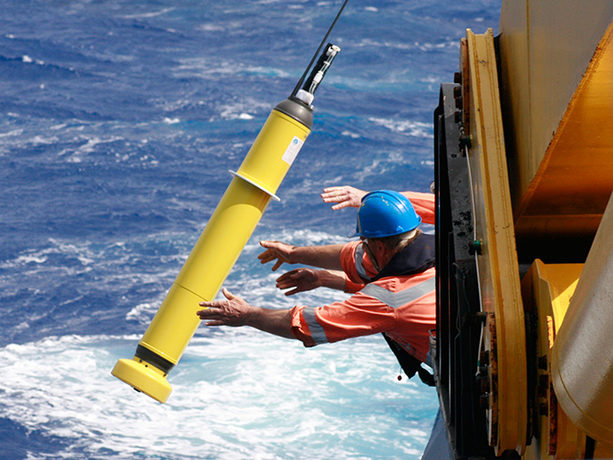More than 70% of the earth’s surface is covered by oceanic waters which means it is home to a significant amount of the world’s biodiversity. This also means that there is a significant amount of area to study to fully understand the ecological processes and interactions occurring, and the factors impacting them. One of the biggest factors impacting these ecological processes and the survival of aquatic organisms is oxygen levels, which was the focus of Dr. Hamme’s research. Dr. Hamme presented on a relatively new technology that allows for the robotic measurements of oxygen and other biogeochemical measurements, the Argo float. The Argo float allows for a minimal-effort measurement of oxygen at different depths of the ocean and collects data in real time.
Other than the general oxygen cycling information Dr. Hamme provided, much of her presentation was new information for me, particularly the Argo float technology. In a meeting with Dr. Hamme earlier in the day, she mentioned that a basic Argo float costs $20,000, up to ~$100,000 for a float with more features. This is a large investment, however with their several year life-span and robotic capabilities, they appear to be worth the investment. One of their neatest features is the ability to change depths on their own. Oil is pumped into an external bladder to increase the volume of the float and cause it to rise towards the surface. When it’s time for the float to sink, the oil leaves the bladder and the volume of the float decreases. Another feature that makes these floats worth their money is that you can receive the data they collect via satellite, and so you don’t have to retrieve them. In fact, Dr. Hamme mentioned that these floats never get retrieved and sink to the bottom of the ocean when their life-span is up.
Dr. Hamme emphasized the importance of these floats for expanding sampling times and locations, but also emphasized the importance of shipboard collected data for calibration of Argo data. Based on current available data, there appears to be trends of global deoxygenation in the ocean, but Dr. Hamme says that more locations need to be sampled more often to truly get a global average as there are some areas of the ocean that are quite understudied. Even though I didn’t really get anything out of Dr. Hamme’s presentation that is applicable to my own project, I enjoyed the new knowledge I gained on oceanography and new technology. I thought Dr. Hamme presented the material well and in a way that was easy for non-oceanographers to understand.
Dr. Hamme also responded well to questions and had a clear knowledge of her subject based on her answers to the many questions she received. I thought she gave a good presentation on her findings, however I wish she went into more detail on what the data means such as the ecological impact these decreasing oxygen levels will have, and potential measures to stop these dropping oxygen levels. Overall though, a great presentation from Dr. Roberta Hamme.


Recent Comments